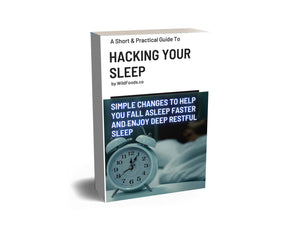Using Cinnamon for Blood Sugar Control: What Works

Cinnamon for blood sugar — could it possibly be true that a spice used for generations was all you needed to control your blood sugar?
But this breakfast spice is doing more than just flavoring your oatmeal.
If you’re interested in something to help support your metabolism and regulate glucose, cinnamon may be one of your most convenient —and delicious — options.
First, let’s take a look at how it works (well)& the real thing we need to focus on when using cinnamon for healthy blood sugar.
The Ways Cinnamon Regulates Blood Sugar
Natural compounds in cinnamon work much the same way as insulin (1), albeit on a somewhat smaller scale.
These substances can enhance glucose uptake by your cells, so it’s easier to handle your blood sugar after meals.
One important player is a polyphenol called MHCP, which enhances insulin sensitivity (2).
Research suggests cinnamon may decrease fasting blood sugar and help keep glucose levels under control throughout the day.
It's also packed with antioxidants that combat inflammation—a common bedfellow of blood sugar issues.
The best part?
Cinnamon pairs with your body rather than fighting it.
Varieties of Cinnamon, and Why It Matters
Cinnamon is not all the same.
The kind of cinnamon most commonly sold in supermarkets is Cassia cinnamon, which has higher levels of a substance that can be harmful called coumarin (3).
If you’re consuming cinnamon on a daily basis, it can be hard on your liver if coumarin is being ingested in high amounts.
Ceylon cinnamon, also known as true cinnamon, is safer to use every day since it has scant traces of coumarin.
It is also milder in flavor, with a lighter feel to it, so it’s enjoyable in teas or to take daily.
Here at Wild Foods, we use only sustainably-sourced Ceylon cinnamon—direct from small farmers who prioritize purity.
You deserve the very best that nature has to offer with no fillers or additional additives.

Cinnamon For Blood Sugar: How to Take It Best
You don’t need to ingest spoonfuls of cinnamon powder to reap the benefits.
Easy Ways to Mix More Yoga Into Your Daily Routine You don’t have to pack the fridge with green juice or invest in a room full of ganja-butt yoga pants and three layers of grippy mats.
Try shaking a little Ceylon cinnamon onto your coffee or blending some into your morning smoothie.
Brew a Cinnamon Tea. You can make cinnamon tea by letting it steep in hot water for 10-15 minutes.
Cinnamon supplements are a possibility, especially if you’d like to maintain a steady daily amount without modifying your meal plan.
Studies use 500–2000 mg per day on average, so do not take too much; more doesn’t really mean better (4).
Take small steps, be consistent, and give it time to work.
How Long Does It Take for Cinnamon to Lower Blood Sugar?
You won’t get a sudden blood sugar crash the way you might from medication.
Cinnamon doesn’t have the instantaneous effects on glucose control of other products, but it works over time by improving sensitivity to insulin and lowering spikes.
Some report that they found more consistent energy after a few weeks of regular use.
Research indicates it may reduce fasting glucose and improve A1C when used regularly for 8–12 weeks (5).
So if you’re looking for overnight results, it’s time to zoom out.
Cinnamon seems more like a mild friend than a quick-fix sledgehammer.
The magic is all about consistency.

Incorporating Cinnamon into Your Daily Routine
Cinnamon doesn’t perform best alone when it’s part of an overall lifestyle.
Start with your plate.
Whole foods, good fats, and fiber-rich meals take the edge off blood sugar spikes.
Then, move your body.
Even short walks following meals can increase insulin sensitivity.
And don’t forget sleep.
Lack of good sleep can mess with your blood sugar by ramping up stress hormones.
It turns out you can: Enter: cinnamon. Kinda like adding firewood to a cold, steady flame — this spice is going to make it burn clean and bright.
Wild Foods refers to this process as “rewilding” — getting back to the natural cycles on which your body thrives.
Final Thoughts
Consider your metabolism as akin to a campfire.
It requires proper fuel, gentle attention, and constant airflow.
Cinnamon (one of my favorites) is just the spark you need to keep your body balanced and energized.
It’s not glamorous, but it gets the job done — particularly when you incorporate it into your regular flow.
Lower numbers are not the only thing you’re chasing if you take cinnamon for blood sugar.
You’re fighting for your health tooth and nail.
Wild Foods is here to help you take that next step—with clean, wild-sourced Ceylon cinnamon you can count on.
If you're ready to begin enjoying cinnamon the way it was meant to be, we invite you to try our Wild Ceylon Cinnamon and experience the difference for yourself.
🍯 Sweet Without the Sugar Crash — Sprinkle antioxidant-rich Wild Ceylon Cinnamon on your breakfast and feel the difference. ⚡🌱
FAQs on Cinnamon for Blood Sugar Control
How much cinnamon should I take each day to control my blood sugar?
The typical dose is 500-1000 mg per day, although some studies have used doses as high as 1000-2000 mg per day. Ceylon cinnamon is the way to go, and start with a small amount to see how your body takes it.
Which cinnamon is best for diabetes?
Use Ceylon cinnamon for regular use. It has less coumarin in it and is safer for long-term use.
Can I replace medication for diabetes with cinnamon?
No, cinnamon may be able to help — but you shouldn’t toss your prescribed treatments out the window. Always consult your doctor before making changes.
How long does it take for cinnamon to lower A1C?
Clinical research shows it generally takes 8–12 weeks of consistent use to experience a reduction in A1C levels.
Are there any side effects of consuming cinnamon regularly?
While Ceylon cinnamon is relatively safe to consume, you could damage your liver by ingesting too much Cassia cinnamon. Always follow recommended amounts.
Related Studies
1. Title: The Effect of Different Amounts of Cinnamon Consumption on Blood Glucose and Insulin Sensitivity
Cinnamon exhibits insulin-mimetic properties by activating insulin receptor kinase, increasing glucose uptake, and glycogen synthesis.
Link: https://pmc.ncbi.nlm.nih.gov/articles/PMC6425402/
2. Title: A hydroxychalcone derived from cinnamon functions as a mimetic for insulin in 3T3-L1 adipocytes
The cinnamon methylhydroxychalcone polymer (MHCP) stimulates glucose uptake and glycogen synthesis by triggering the insulin receptor signaling pathway, acting as an effective insulin mimetic.
Link: https://pubmed.ncbi.nlm.nih.gov/11506060/
3. Title: Health Benefits and Risks of Consuming Spices on the Example of Ceylon Cinnamon
Cassia cinnamon contains significantly higher coumarin levels (2880–4820 mg/kg) compared to nearly absent levels in Ceylon cinnamon, indicating potential hepatotoxicity risk from Cassia consumption.
Link: https://pmc.ncbi.nlm.nih.gov/articles/PMC9498169/
4. Title: Anti-diabetic and antioxidant effect of cinnamon in poorly controlled type 2 diabetic patients
Clinical trial shows that 1000 mg of cinnamon daily significantly reduces fasting blood glucose by 17.4% and lowers glycosylated hemoglobin (A1C) after 12 weeks.
Link: https://pmc.ncbi.nlm.nih.gov/articles/PMC4835984/
5. Title: The glycaemic outcomes of Cinnamon, a review of the experimental evidence and clinical trials
Clinical trials using cinnamon doses from 500 mg to 6 g daily over 8–12 weeks report modest but significant improvements in fasting blood glucose and A1C in type 2 diabetes.
Link: https://pmc.ncbi.nlm.nih.gov/articles/PMC4609100/
